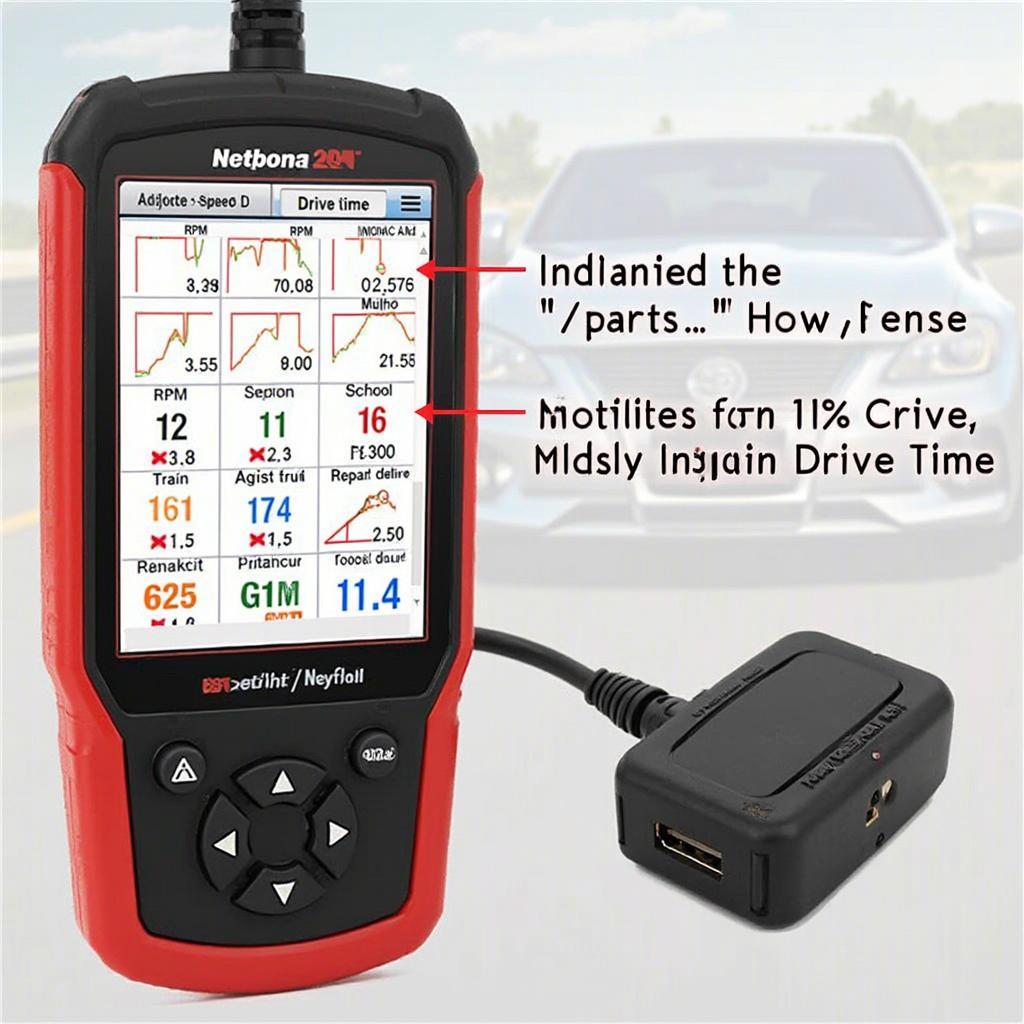Modifying drive time within an OBD2 scanner may seem like a niche topic, but it’s a question that pops up more than you might think, especially amongst those looking to leverage the power of their OBD2 scanners beyond basic diagnostics. Whether you’re a professional mechanic, a fleet manager, or a car enthusiast looking to gain deeper insights into your vehicle’s performance, understanding how to potentially manipulate and analyze drive time data can open up a world of possibilities. This article will delve into the intricacies of this topic, exploring the feasibility, methods, and potential implications of modifying drive time in an OBD2 scanner.
What Does Modifying Drive Time in an OBD2 Scanner Mean?
Before we dive in, let’s clarify what we mean by “modifying drive time.” It’s important to distinguish between directly altering the recorded drive time within the vehicle’s ECU (Engine Control Unit), which is generally not possible with a standard OBD2 scanner, and manipulating how drive time data is displayed, analyzed, or used within the scanner itself or accompanying software. We’ll focus primarily on the latter, exploring how you can utilize OBD2 scanners and software to effectively manage and interpret drive time data for specific purposes.
Why Would You Want to Modify Drive Time Data?
Several scenarios might call for manipulating drive time data within the context of an OBD2 scanner:
- Fleet Management: Fleet managers might want to isolate specific drive time periods for analysis, such as comparing driver efficiency during different shifts or analyzing fuel consumption during peak traffic hours.
- Performance Tuning: Car enthusiasts and mechanics might be interested in analyzing performance metrics during specific drive time intervals, like acceleration times within a certain timeframe or fuel economy during a particular lap on a track.
- Diagnostics: Identifying issues related to intermittent problems that occur only during certain driving conditions, which may correlate with specific drive times. For example, if a problem only arises after a certain duration of driving, analyzing data within that time window could be crucial.
Methods for Working with Drive Time Data
Modifying drive time in the sense of directly altering the ECU’s record is generally not possible with a typical OBD2 scanner. However, you can achieve similar results through various methods:
- Data Logging and Filtering: Most advanced OBD2 scanners and associated software allow for data logging. This logged data can then be filtered and analyzed based on drive time. You can define specific time windows and examine only the data within those parameters.
- Custom Software Development: You could consider obd2 custom development board options if you have specific requirements for handling drive time data that aren’t met by existing solutions. This allows for greater flexibility and customization in how the data is captured, processed, and displayed.
- Third-Party Software Integration: Numerous third-party software applications are designed to work with OBD2 scanners, offering advanced data analysis and reporting features. These applications often include tools for manipulating and visualizing drive time data.
Using OBD2 Scanners to Write Code
It’s important to note that while some advanced OBD2 scanners allow for limited scripting or programming, using an obd2 scanner to write code that directly modifies the vehicle’s ECU is highly unlikely and could be potentially damaging. This area typically requires specialized tools and expertise beyond the capabilities of standard OBD2 scanners. Check out resources on using obd2 scanner to write code for more insights into what’s possible.
Example: Analyzing Fuel Efficiency During Specific Drive Times
Let’s say you’re a fleet manager wanting to analyze fuel efficiency during rush hour traffic. You could use your OBD2 scanners to log data throughout the day. Using the accompanying software, you can filter the logged data to isolate the drive time periods corresponding to rush hour. This allows you to compare fuel consumption during rush hour versus other times of the day, providing valuable insights for optimizing routes and driver behavior.
Conclusion
While directly modifying drive time recorded in a vehicle’s ECU is generally not feasible with standard OBD2 scanners, numerous methods exist for working with and analyzing drive time data effectively. From data logging and filtering to custom software development, the possibilities are vast. By understanding these techniques, you can unlock the full potential of your OBD2 scanner and gain valuable insights into your vehicle’s performance. If you want to find out where the OBD2 port is on your car, you can search for your car and model, such as the 2013 audi a8 obd2 port location. Don’t hesitate to leverage the power of your OBD2 scanner to delve deeper into drive time data and optimize your vehicle’s performance. Or if you have a mk7 gti obd2 related questions you can find answers on our website.
FAQ
- Can I directly change the mileage recorded in my car using an OBD2 scanner? Generally no. Altering mileage is illegal in most jurisdictions.
- How can I track fuel consumption during specific drive time periods? Use data logging and filtering features in your OBD2 software.
- What are the benefits of analyzing drive time data? Improved fleet management, performance tuning, and diagnostics.
- Can I use an OBD2 scanner to program my car’s ECU? Not typically. This requires specialized tools and expertise.
- Where can I find more information about advanced OBD2 techniques? OBDFree offers a wealth of resources on topics like obd2 ecofuel.
For further assistance, please contact us via WhatsApp: +1(641)206-8880, Email: [email protected] or visit us at 789 Elm Street, San Francisco, CA 94102, USA. Our customer service team is available 24/7.

